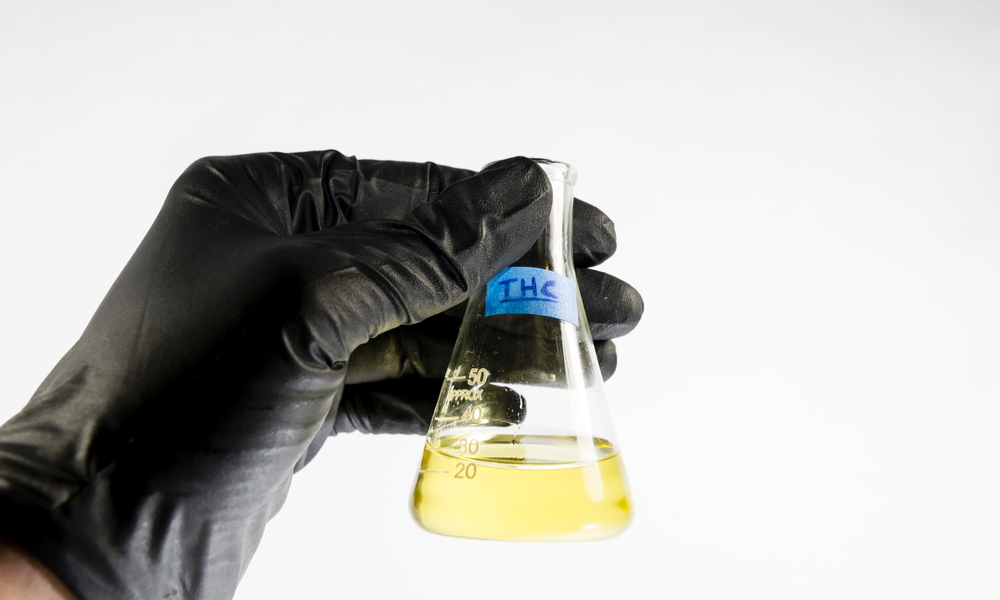The world of cannabinoids is constantly evolving, with ongoing research leading to the discovery of new and exciting compounds. While most people are familiar with cannabinoids like CBD and THC, there is a new wave of formulations gaining attention. This comprehensive guide will introduce you to seven new cannabinoid formulations, including Delta-10, HHC, THC-O, THCV, and others. We will explore the unique properties, potential benefits, and safety considerations of these emerging cannabinoids, providing you with valuable insights into the latest developments in the world of cannabis and hemp.
Delta-10 (Delta-10-Tetrahydrocannabinol)
Delta-10 is a naturally occurring minor cannabinoid that shares similarities with its well-known counterparts, Delta-9-THC and Delta-8-THC. Although its psychoactive effects are milder compared to Delta-9-THC, Delta-10 still has some potential for inducing euphoria and relaxation. As a relatively new discovery, Delta-10 is gaining popularity in various cannabis products, offering consumers an alternative to other THC variants. However, due to its novelty, further research is needed to fully understand its effects and potential therapeutic applications.
HHC (Hexahydrocannabinol)
Hexahydrocannabinol, commonly referred to as HHC, is a synthetic cannabinoid that is chemically related to THC. It is a unique compound that has been modified to produce a different molecular structure, which may result in distinct effects when compared to traditional THC. While HHC’s psychoactive potential is reported to be less intense than Delta-9-THC, it is still recommended for experienced users only. Due to its synthetic nature, more research is needed to understand its long-term safety and potential therapeutic uses.
THC-O (THC-O-Acetate)
THC-O is an analog of Delta-9-THC that has been acetylated, making it even more potent than its parent compound. This potent synthetic cannabinoid is gaining traction among experienced cannabis users seeking a unique and intense psychoactive experience. THC-O is known for its potential sedative effects, and anecdotal reports suggest it may have therapeutic value for conditions such as chronic pain and sleep disorders. However, its strength demands careful dosing and consideration of potential side effects.
THCV (Tetrahydrocannabivarin)
THCV is a minor cannabinoid found in cannabis and hemp plants, and it differs from THC in its molecular structure. Unlike THC, THCV is believed to have a suppressive effect on appetite and may act as an appetite suppressant. This characteristic has garnered attention as a potential aid in weight management. Moreover, THCV’s psychoactive effects are reported to be milder and shorter-lasting than THC, making it an interesting alternative for those seeking a more functional experience.
CBN (Cannabinol)
CBN is a non-intoxicating cannabinoid that develops from the degradation of THC over time. As cannabis or hemp flowers age, the THC content decreases, and CBN levels increase. Although not widely known, CBN is gaining interest for its potential sedative effects and its reported ability to enhance the sleep-promoting properties of other cannabinoids like CBD. Research is ongoing to uncover the full range of CBN’s potential benefits and its interactions with other cannabinoids.
CBC (Cannabichromene)
Cannabichromene, or CBC, is a non-psychoactive cannabinoid that occurs naturally in cannabis and hemp plants. Although it does not produce intoxicating effects, CBC has shown promise in various preclinical studies. Research suggests that CBC may possess anti-inflammatory, analgesic, and neuroprotective properties. It is believed to interact synergistically with other cannabinoids, potentially enhancing the overall therapeutic effects of full-spectrum cannabis products.
CBG (Cannabigerol)
Cannabigerol, or CBG, is often referred to as the “mother cannabinoid” because it is the precursor to other major cannabinoids like THC and CBD. Although CBG is found in lower concentrations than its more famous counterparts, it has garnered attention for its potential pharmacological effects. Preliminary research indicates that CBG may have anti-inflammatory, neuroprotective, and antidepressant properties. Its potential to modulate the endocannabinoid system and interact with other cannabinoids makes it an intriguing candidate for future therapeutic applications.
Safety Considerations and Legal Status
As with any cannabinoid, safety considerations and understanding the legal status are crucial. While some of these new formulations have promising potential, their limited research and recent emergence raise concerns about their safety and long-term effects. Additionally, the legal status of these cannabinoids may vary depending on the region, and it is essential to stay informed about the local regulations.
Exploring the World of Cannabinoids: A Brief Overview
Cannabinoids are a diverse group of chemical compounds found in cannabis and hemp plants. The most well-known cannabinoids are THC (tetrahydrocannabinol) and CBD (cannabidiol). THC is responsible for the psychoactive effects associated with cannabis, while CBD is non-psychoactive and has gained popularity for its potential therapeutic properties. However, there are over 100 different cannabinoids present in these plants, each with unique characteristics and potential effects on the human body. As research in this field continues to evolve, scientists have started to uncover new and lesser-known cannabinoids, expanding our understanding of their potential benefits and applications.
The Emergence of Novel Cannabinoid Formulations
The recent surge in interest surrounding cannabinoids has led to the discovery and isolation of several new formulations. Researchers, cannabis enthusiasts, and product manufacturers are continuously exploring these compounds to better understand their properties and potential contributions to human health. The seven new cannabinoid formulations discussed in this guide—Delta-10, HHC, THC-O, THCV, CBN, CBC, and CBG—are part of this wave of exciting discoveries. Each compound presents unique opportunities for scientific exploration and product development, opening the door to new possibilities in the world of cannabinoids.
Navigating the Research Landscape: The Importance of Preclinical and Clinical Studies
As the popularity of these new cannabinoid formulations grows, it is essential to emphasize the importance of research in establishing their safety and efficacy profiles. Preclinical studies on cell cultures and animal models provide valuable insights into how these compounds interact with the body’s systems and potential therapeutic applications. Clinical trials with human subjects are crucial for understanding the actual effects of these formulations on various conditions and health outcomes. Rigorous research is the key to unlocking the full potential of these cannabinoids and ensuring they are used responsibly and effectively.
Consumer Awareness and Education
With the increasing availability of these novel cannabinoid formulations, consumer awareness and education are paramount. As enthusiasts seek new experiences and potential health benefits, it is crucial to approach these compounds with informed decision-making. Understanding the differences between cannabinoids, their potential effects, and the varying legal status is vital to make responsible choices. Additionally, consumers should be aware of potential interactions with other medications or existing health conditions. Consulting with healthcare professionals and obtaining products from reputable sources can contribute to a positive and safe cannabinoid experience.
Regulatory Challenges and Advancements
The ever-changing landscape of cannabis and hemp regulations adds complexity to the introduction of new cannabinoid formulations. While some jurisdictions may embrace these compounds with open arms, others may have stricter regulations or outright bans. As research progresses and scientific evidence accumulates, regulatory bodies may need to adapt their approaches to accommodate the evolving understanding of these cannabinoids. Striking a balance between consumer access, safety, and legal compliance remains a challenge, making it essential for stakeholders to engage in ongoing dialogue to ensure the responsible integration of these new formulations.
Promising Applications: Beyond Recreational Use
While some of these new cannabinoids may be sought after for their psychoactive effects, their potential extends beyond recreational use. Early research and anecdotal evidence suggest a wide range of potential applications, including managing chronic pain, sleep disorders, anxiety, depression, and inflammation. These formulations may also hold promise in the field of medicine, with potential applications in pharmaceuticals and novel treatments. As scientific understanding and research progress, these cannabinoids may play a significant role in the future of medicine and wellness.
Conclusion
The world of cannabinoids is expanding rapidly, and the discovery of new formulations like Delta-10, HHC, THC-O, THCV, CBN, CBC, and CBG brings exciting possibilities for cannabis and hemp enthusiasts. While some of these compounds are gaining popularity for their unique effects and potential therapeutic benefits, more research is needed to fully understand their mechanisms of action, safety profiles, and potential applications. As these cannabinoids continue to attract attention, it is essential to approach them with caution and stay updated with the latest developments in cannabinoid research.
As a Content Writer, he artfully crafts engaging and informative content across diverse topics, translating his expertise into valuable resources for readers. Moreover, in his role as a Corporate Partnerships Adviser, Thomas leverages his strategic mindset to foster mutually beneficial alliances for businesses, driving growth and success.
Thomas Anderson's diverse skill set, encompassing counseling, content creation, and corporate advisory, positions him as a valuable resource for those on the path to personal development and businesses aiming for strategic excellence.
- What Is Thc-P - August 29, 2023
- What are the Best THC-P TINCTURE - August 29, 2023
- Introducing 7 New Cannabinoid Formulations: Delta-10, Hhc, Thc-O, Thcv, And More - August 29, 2023








